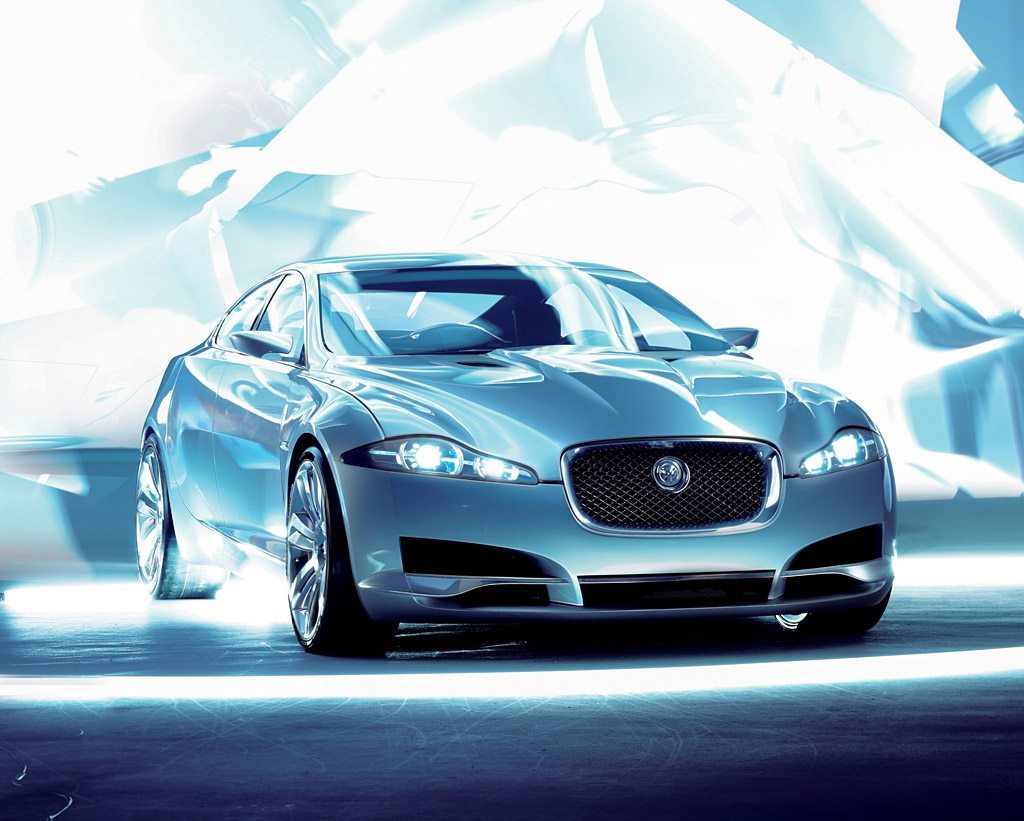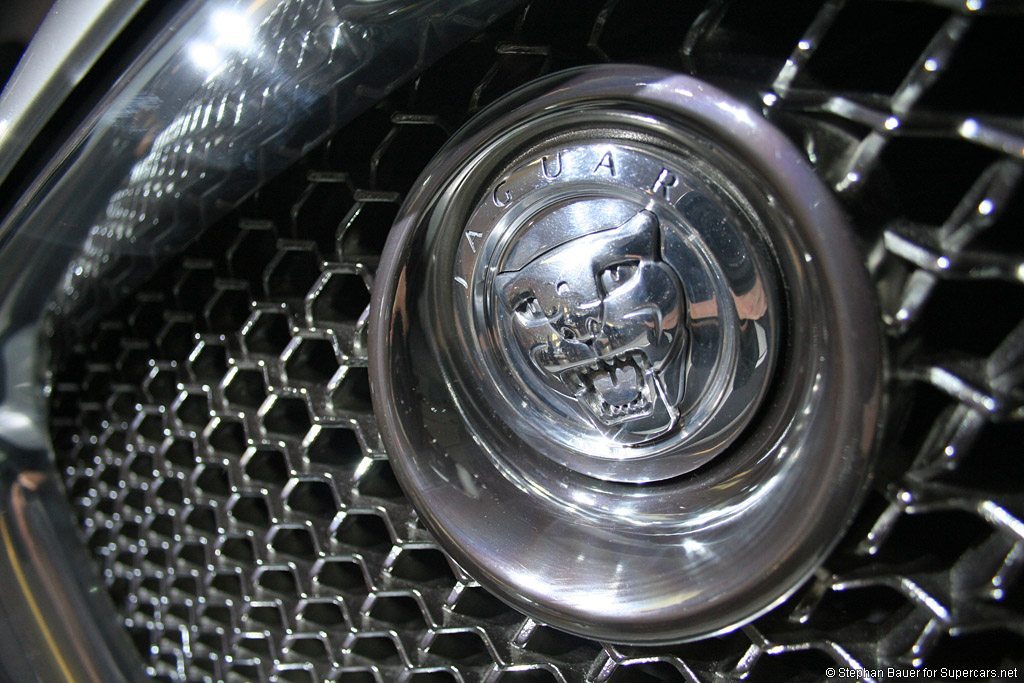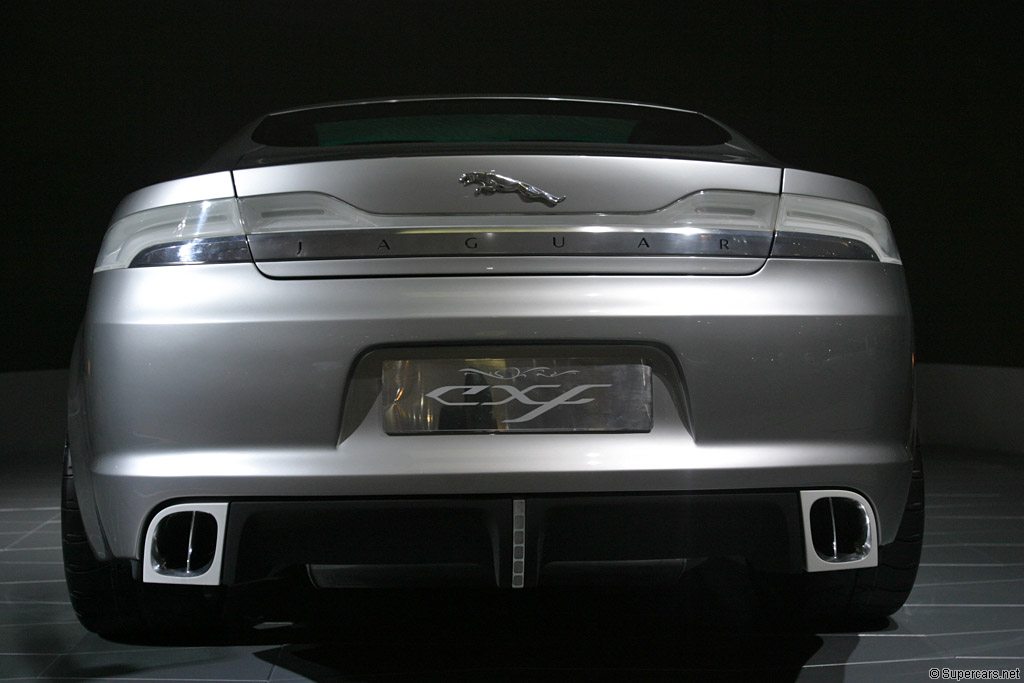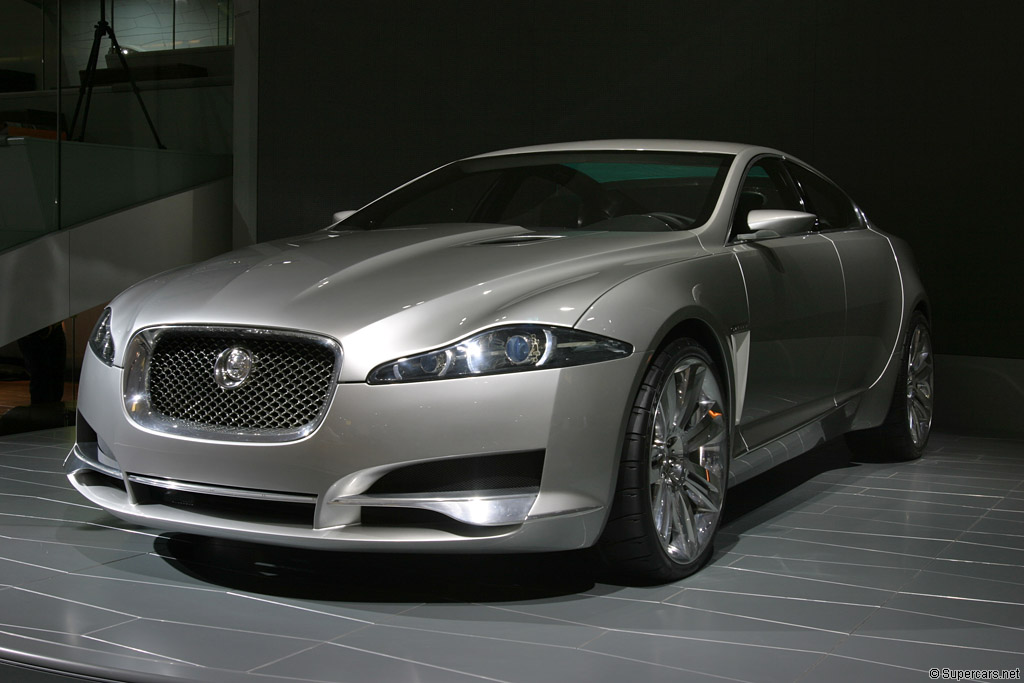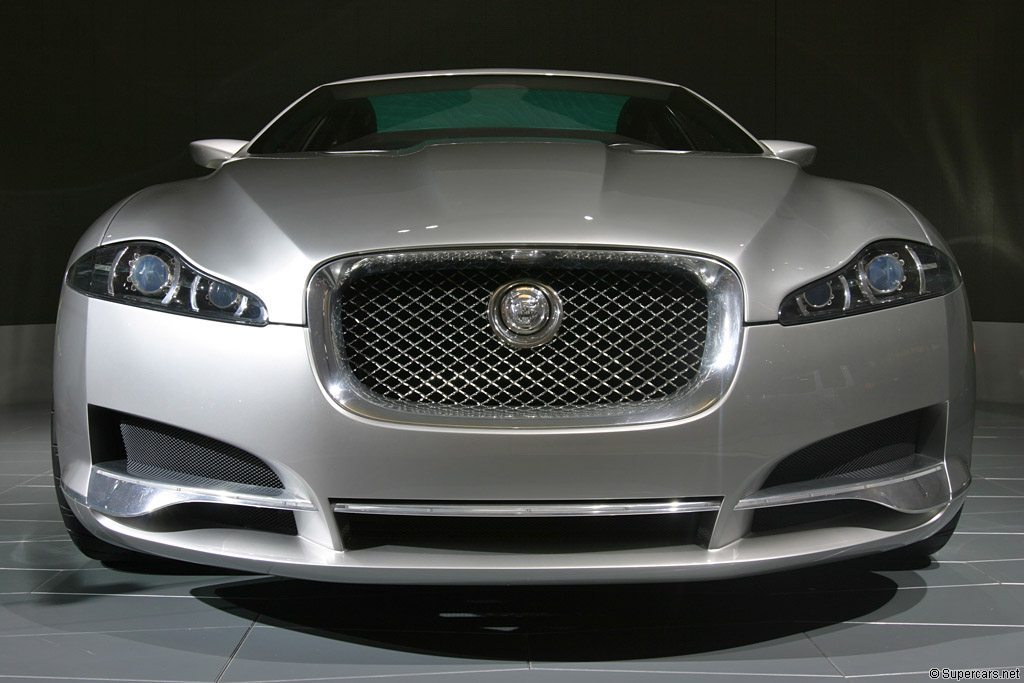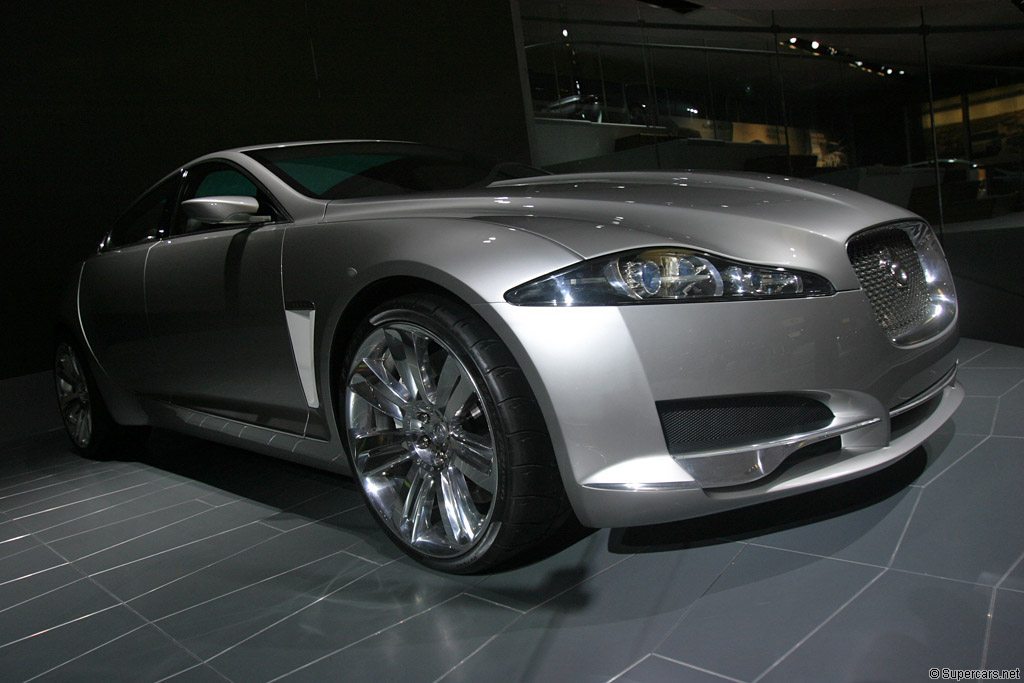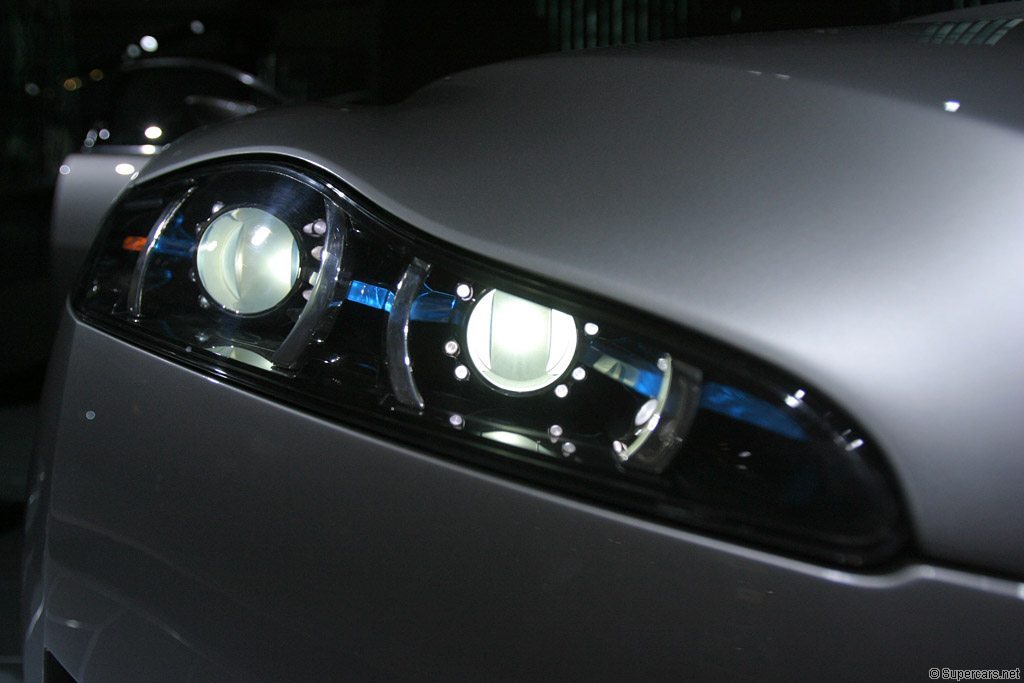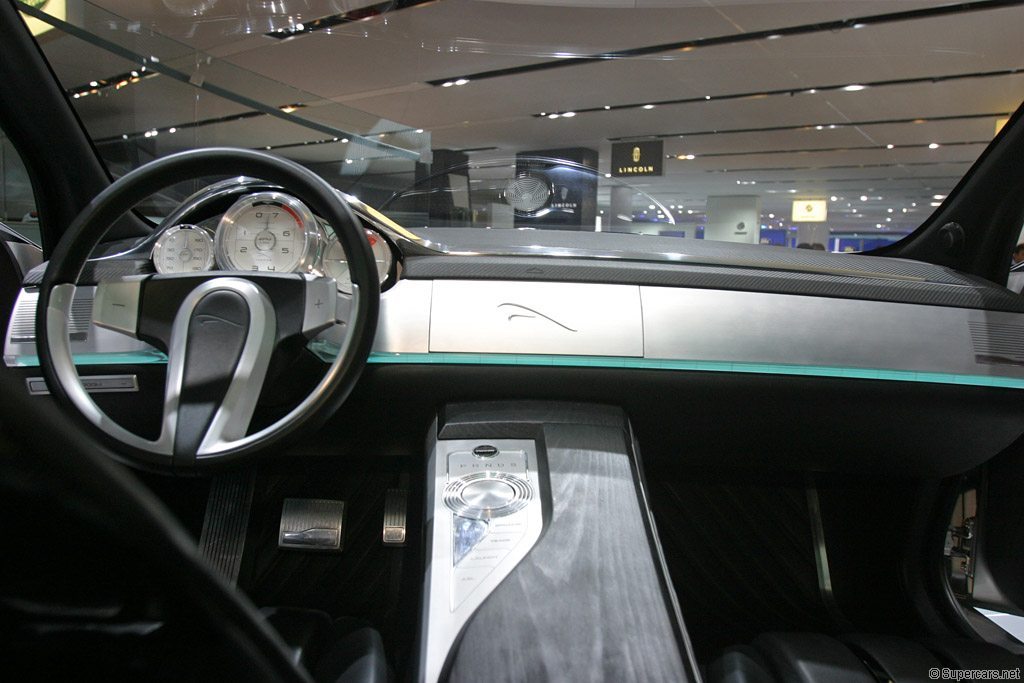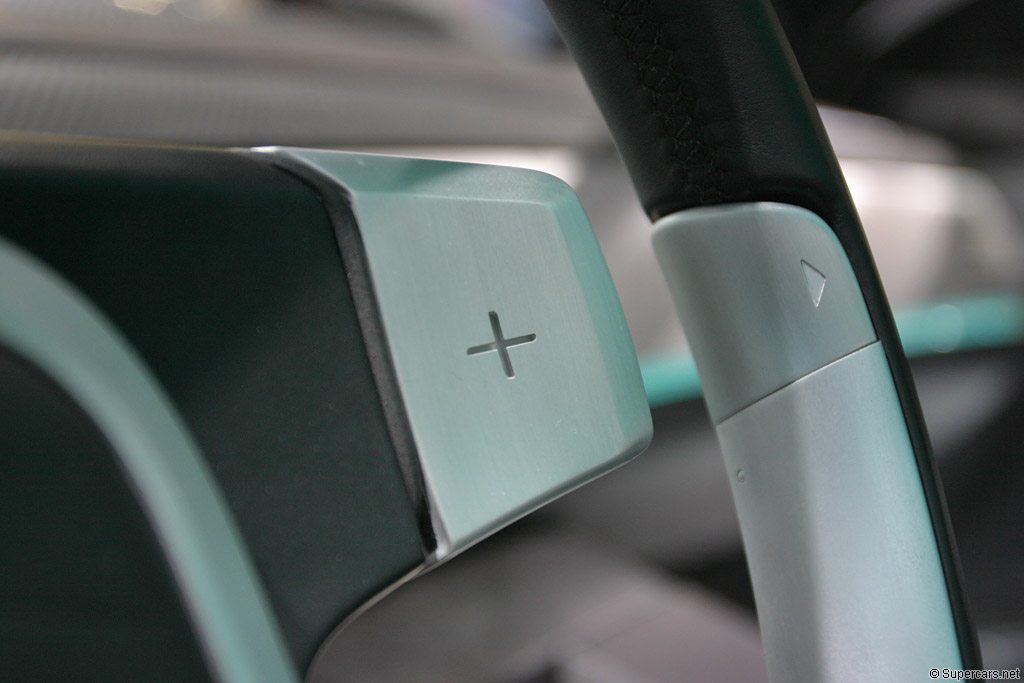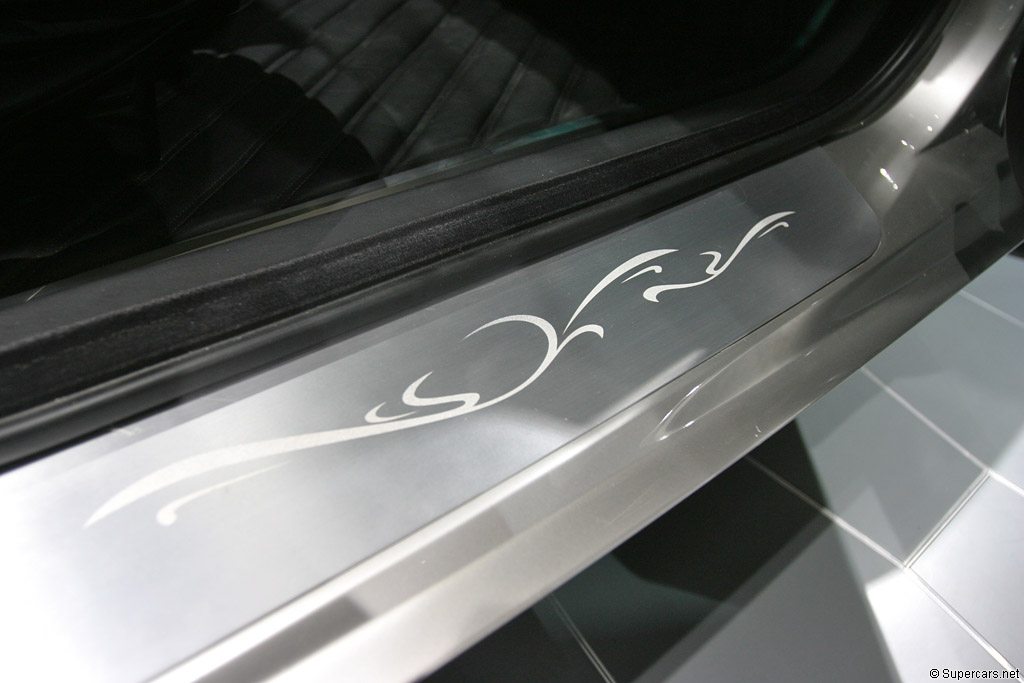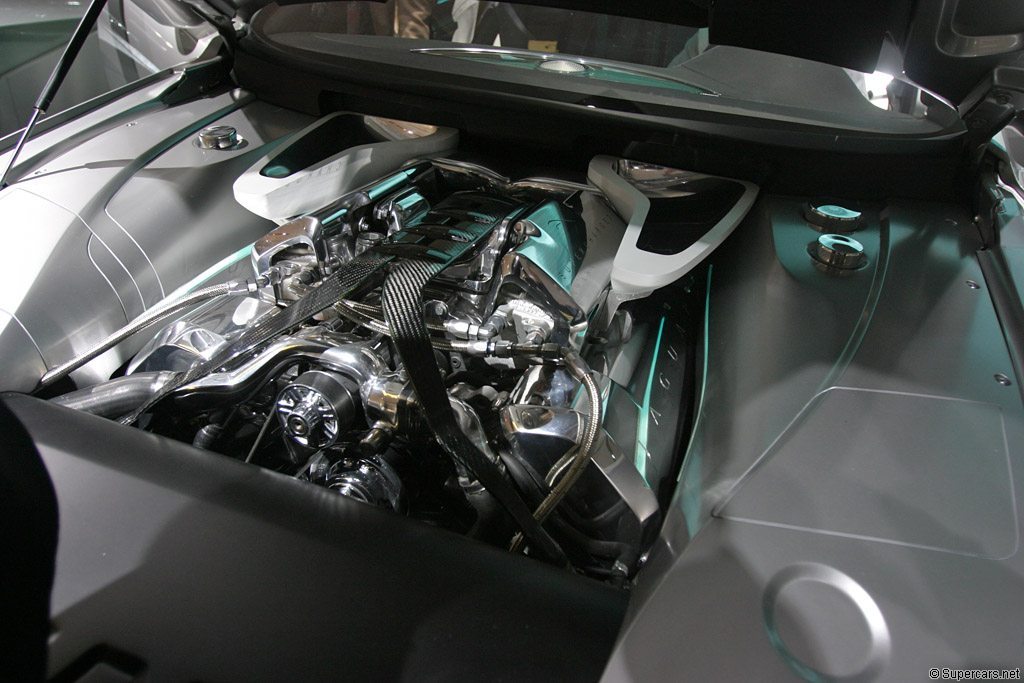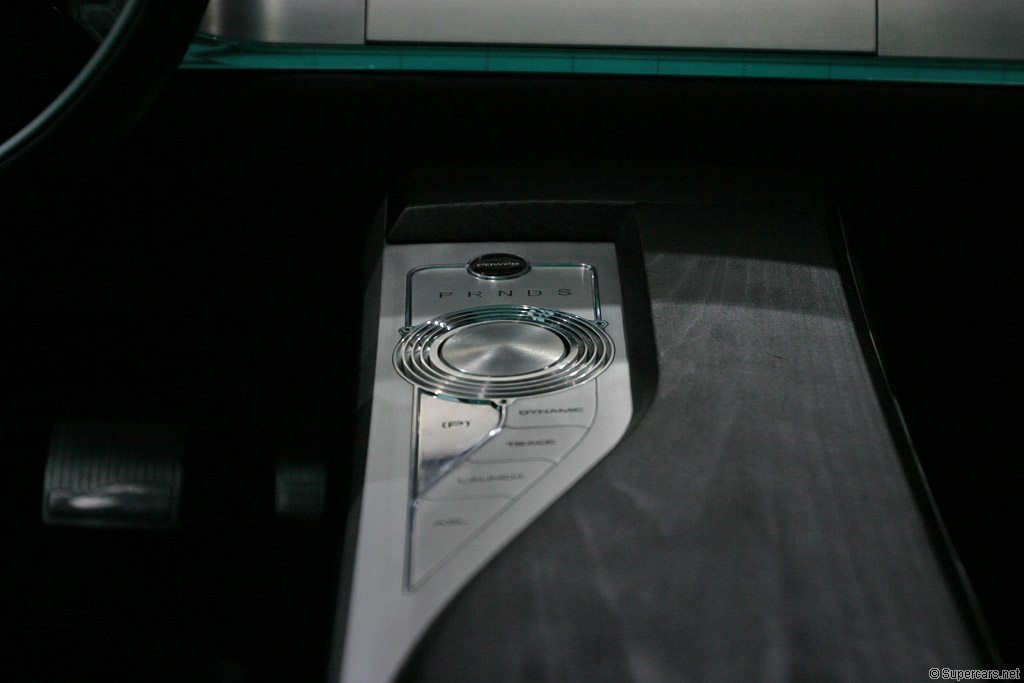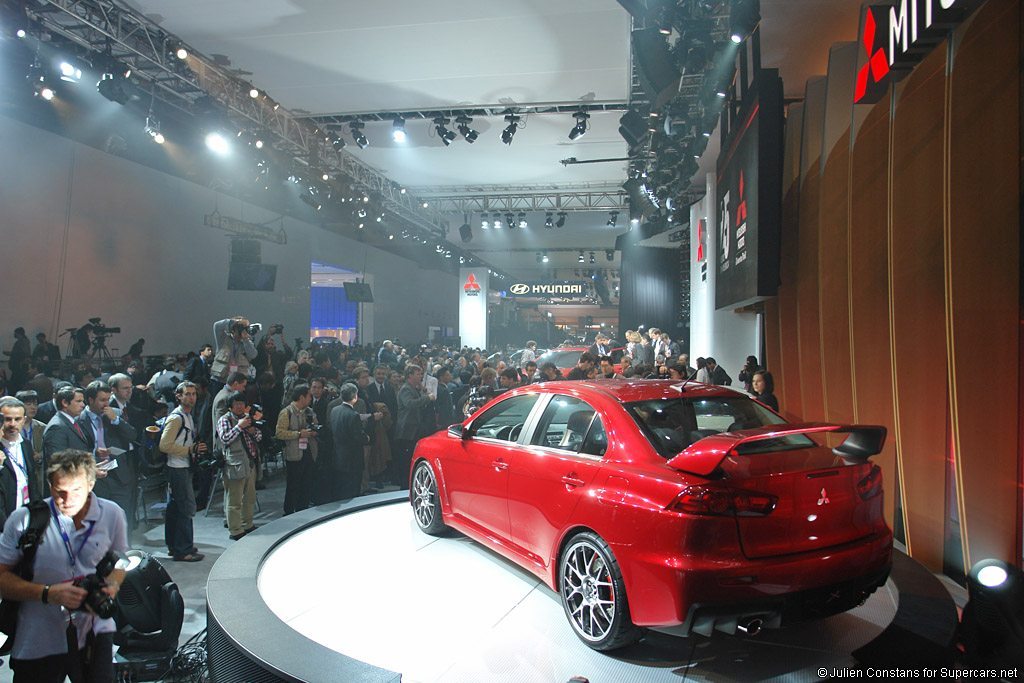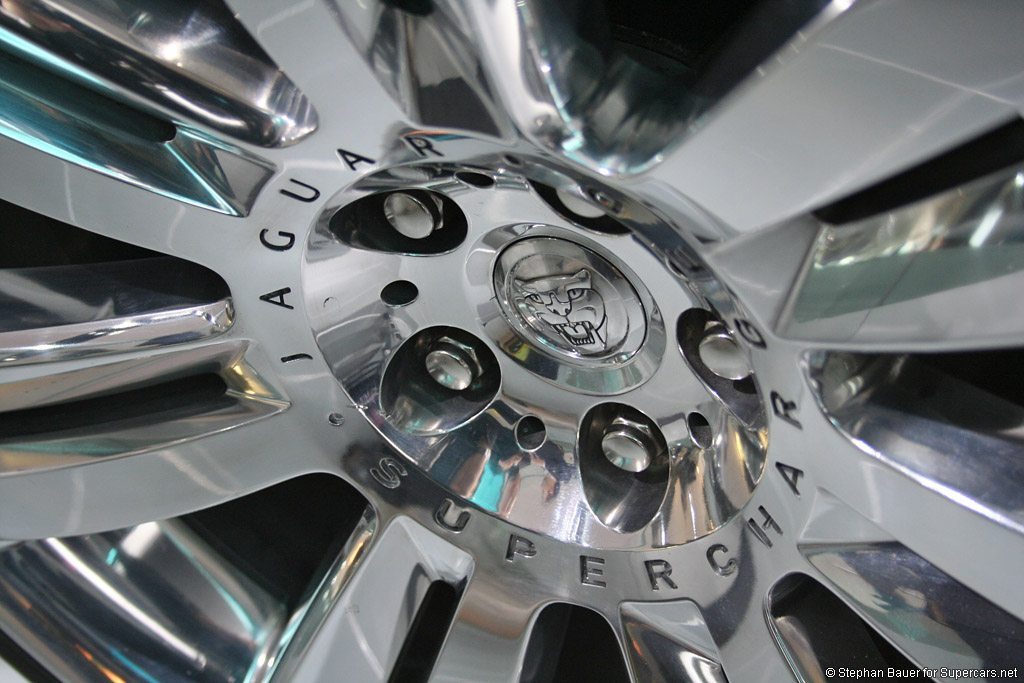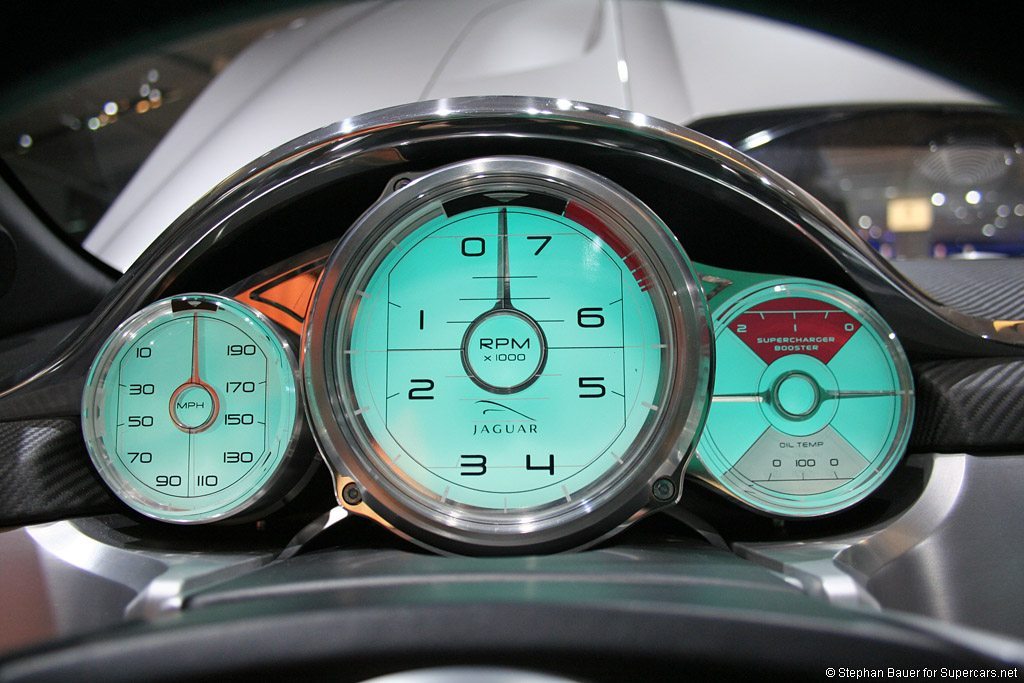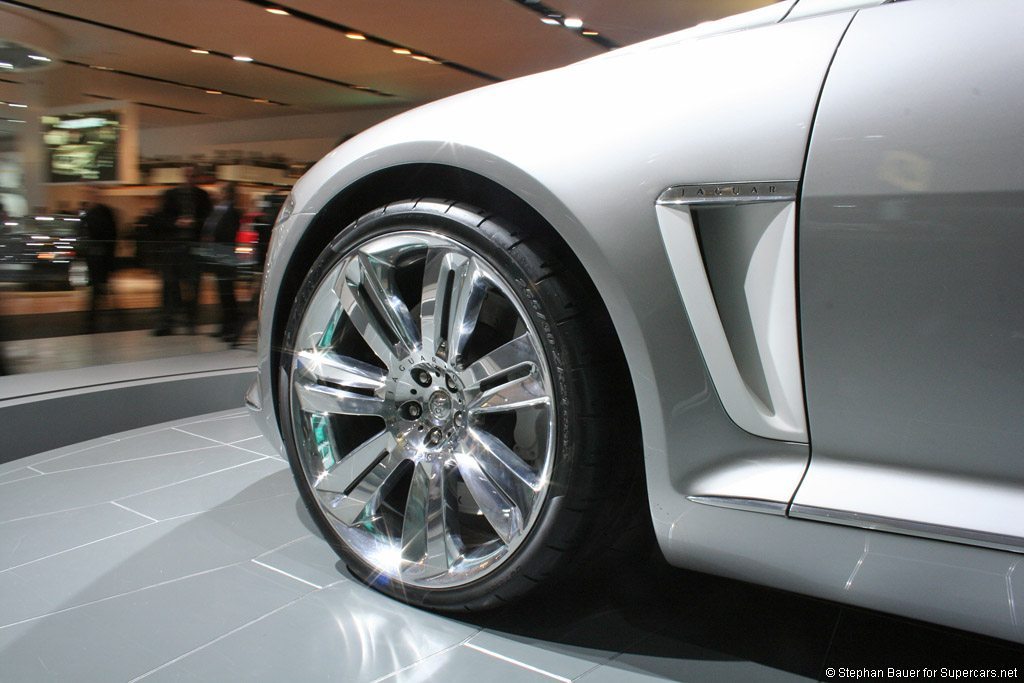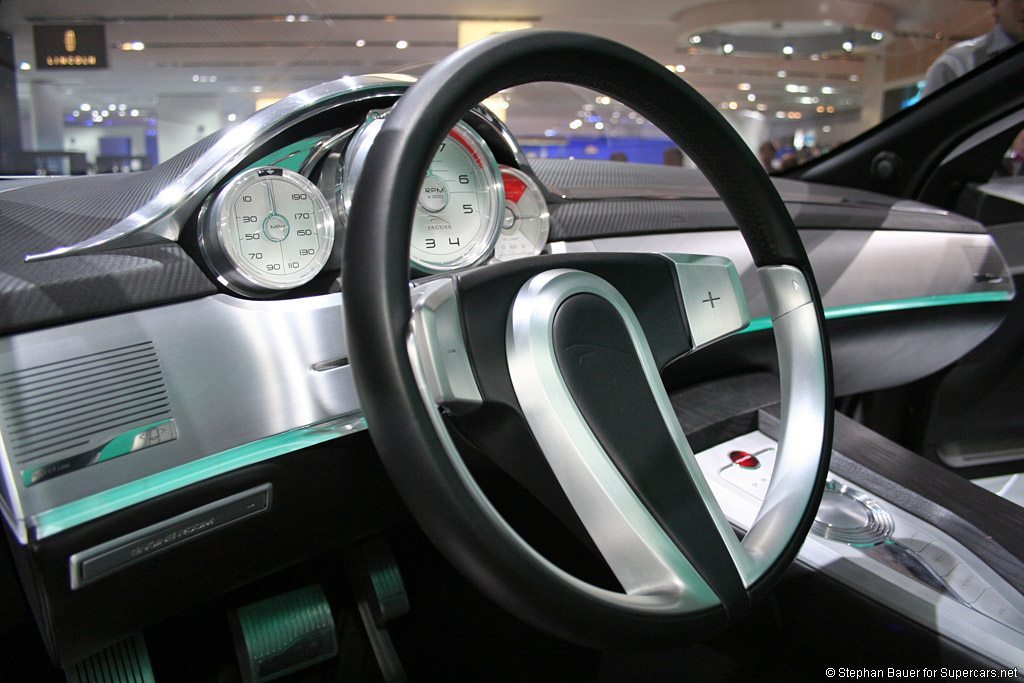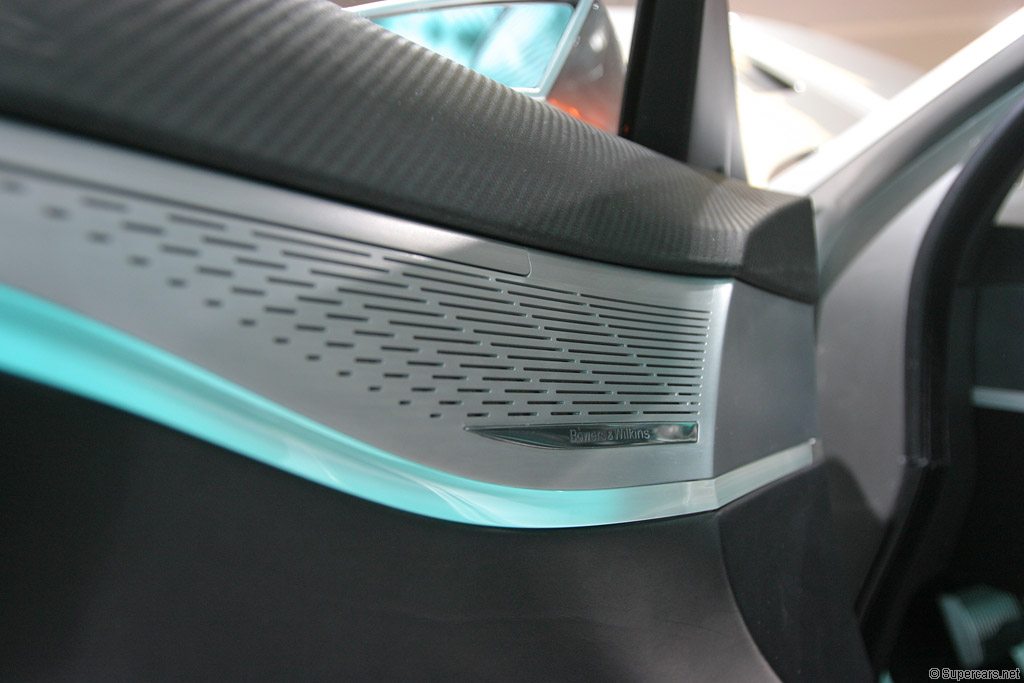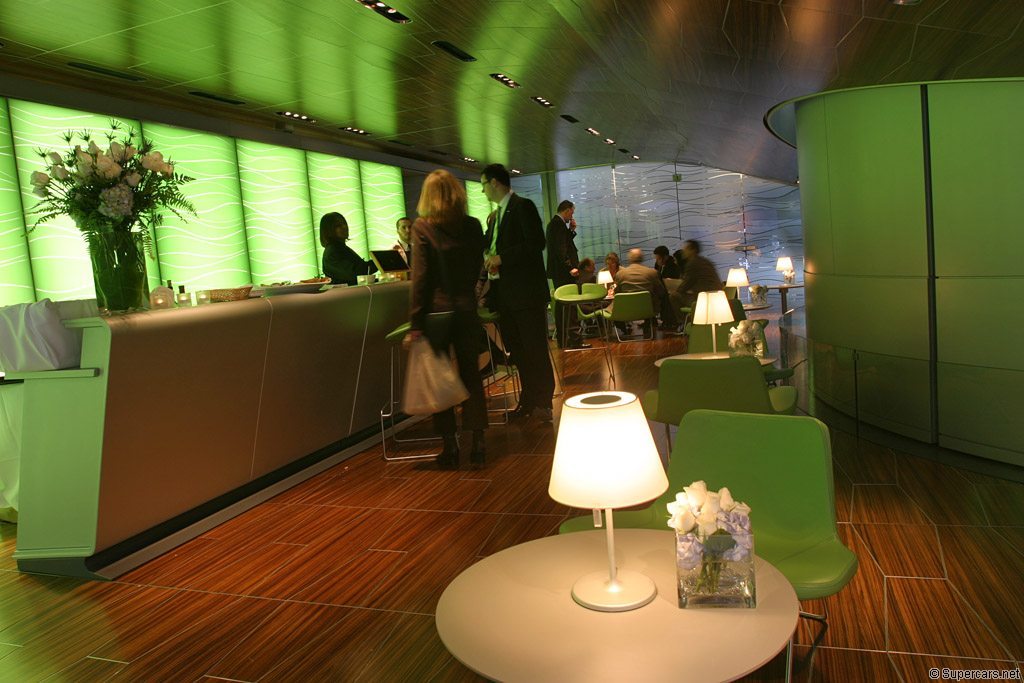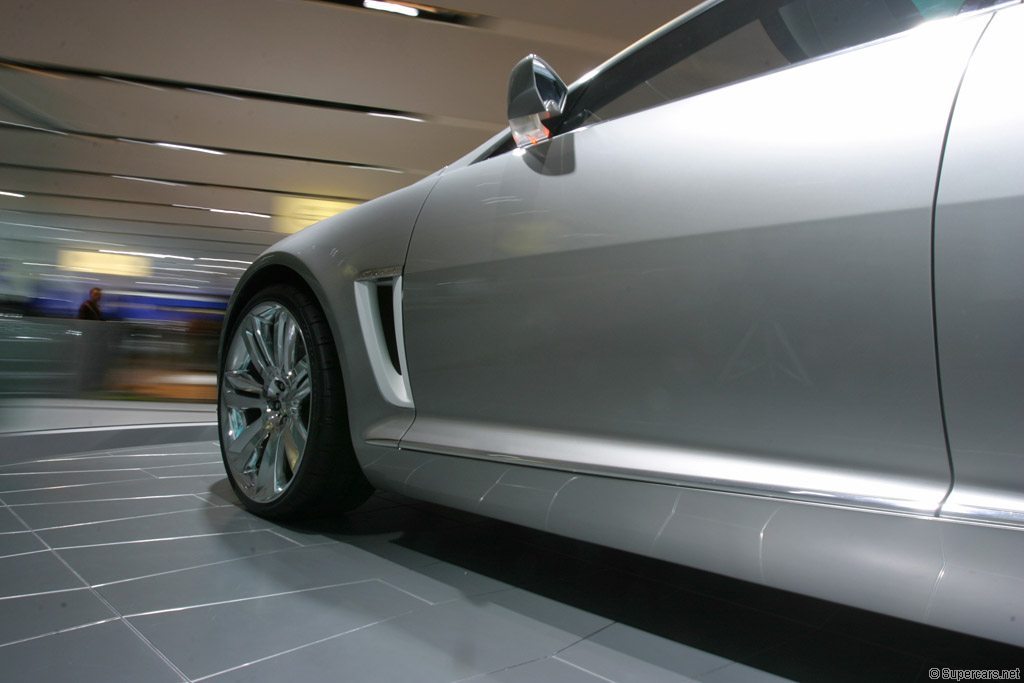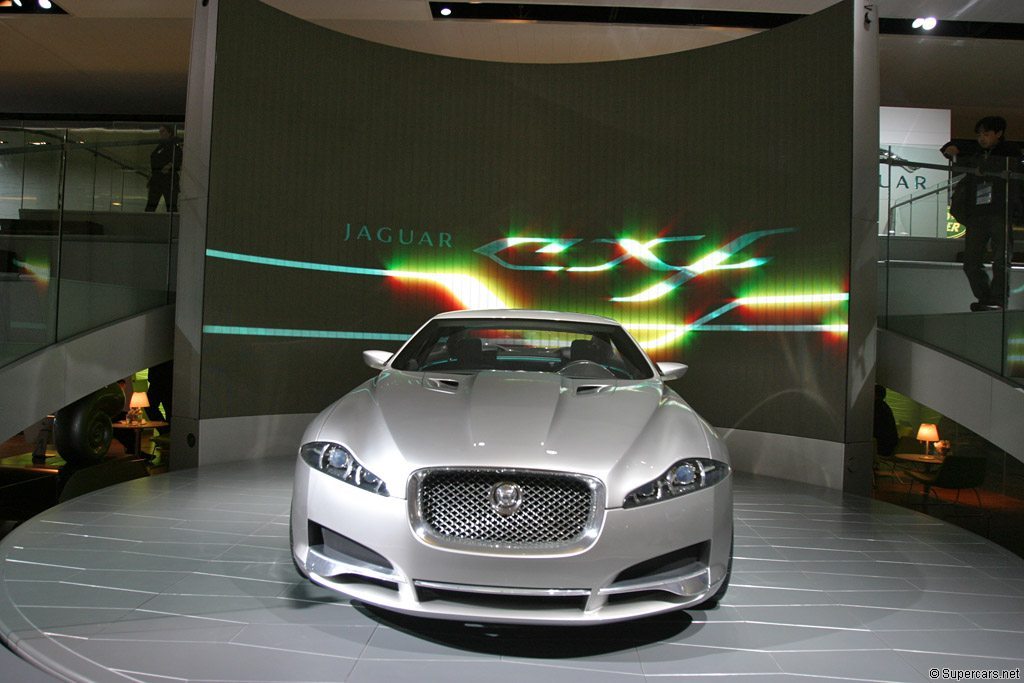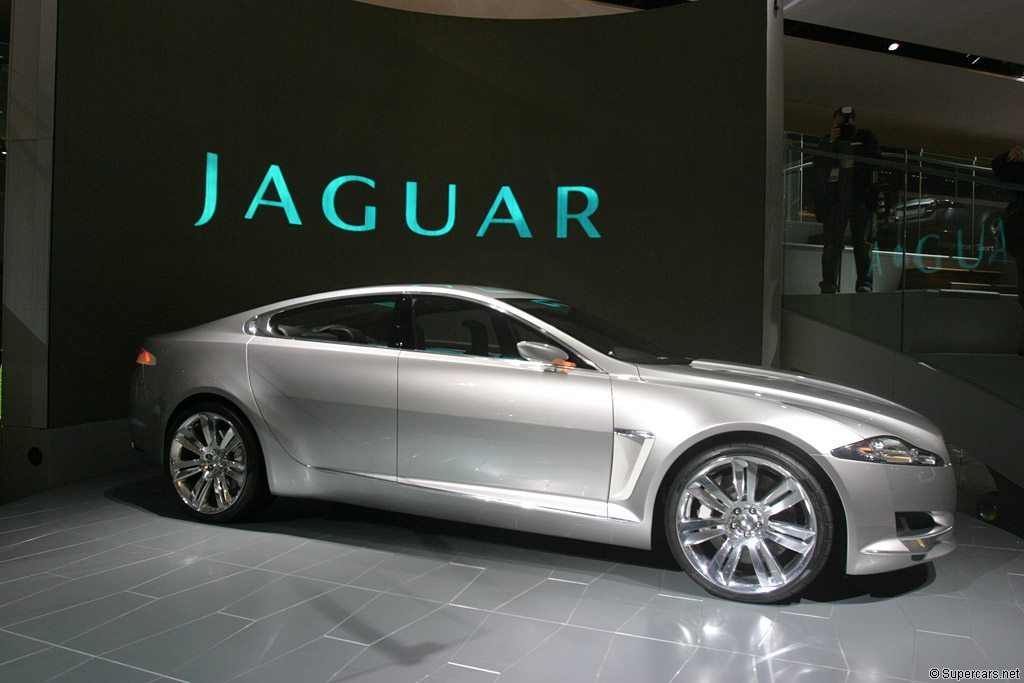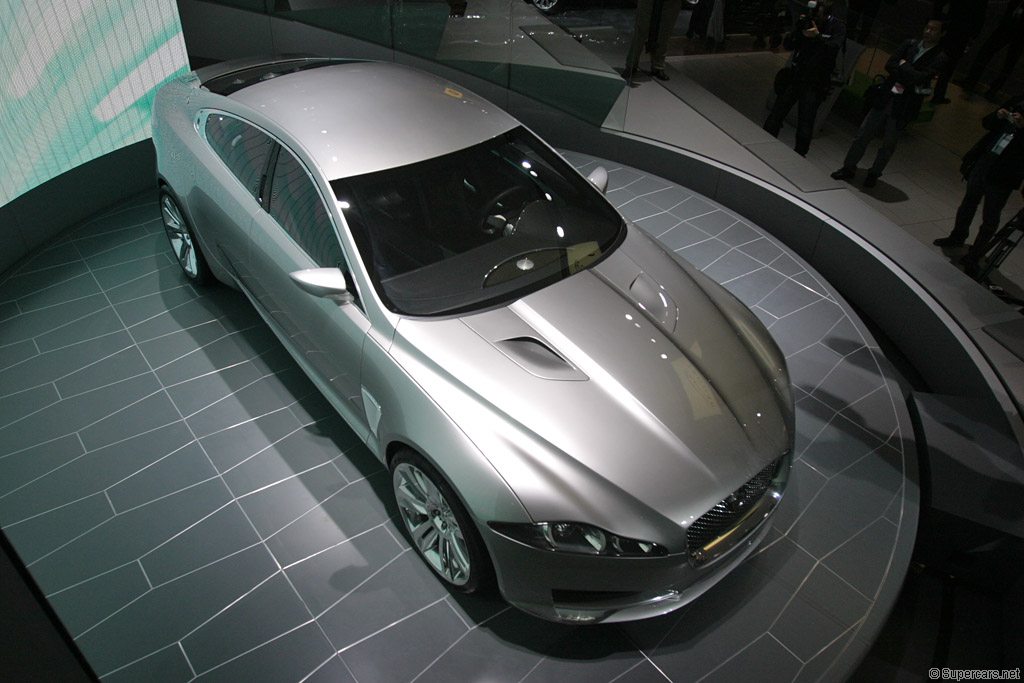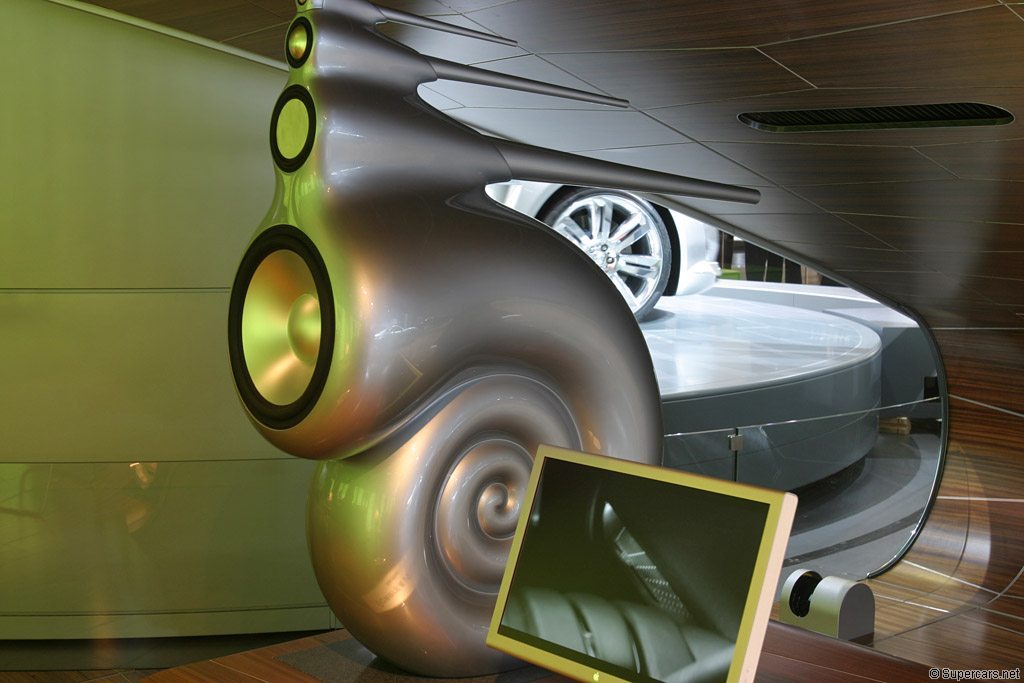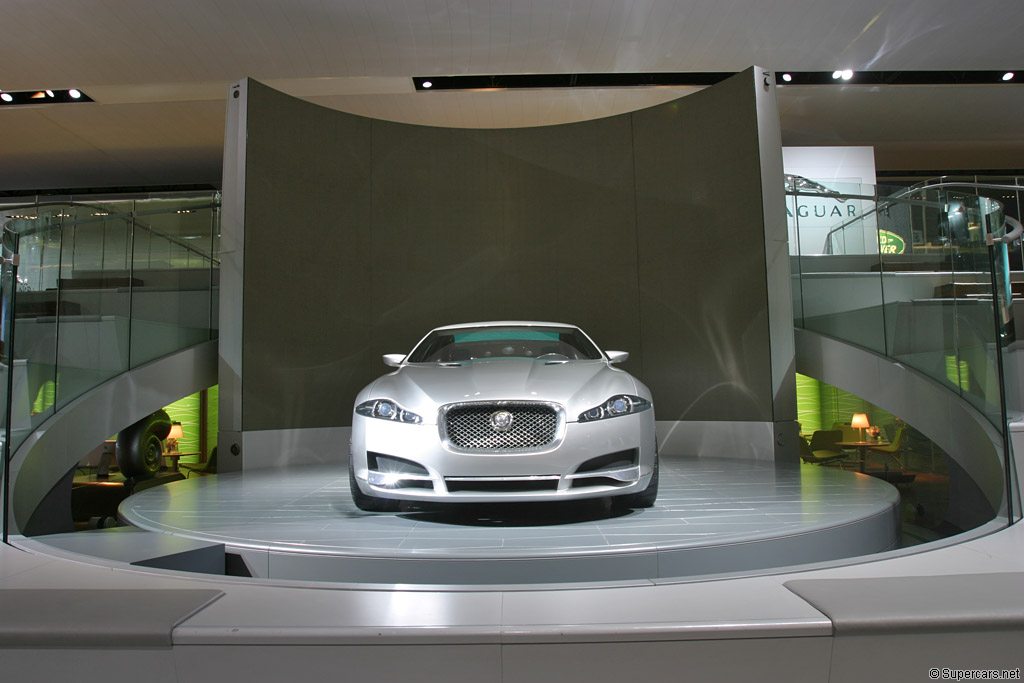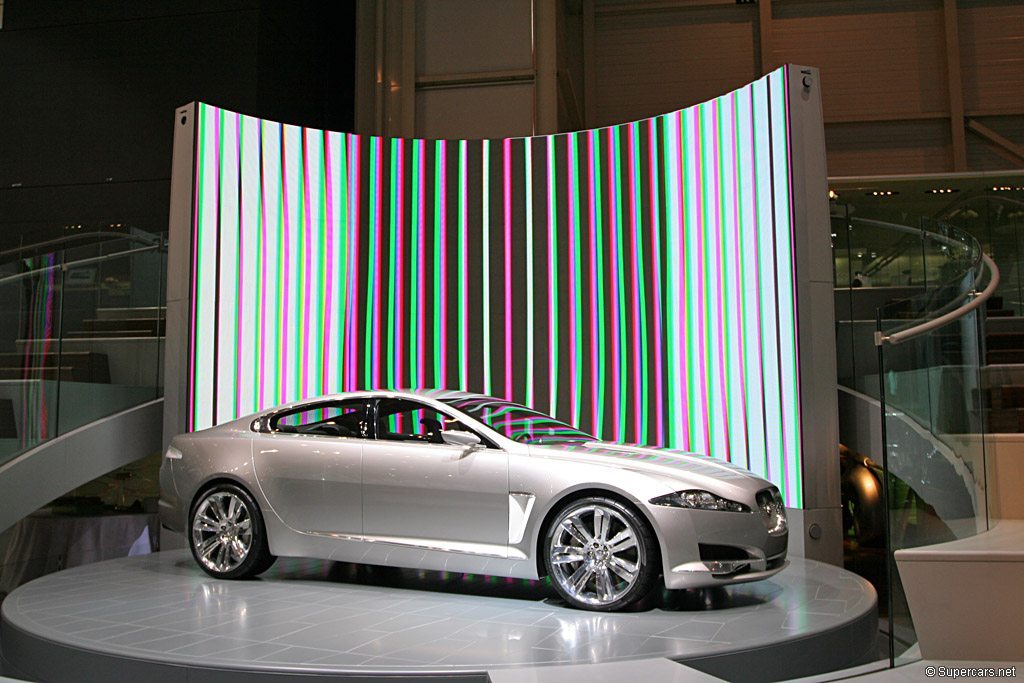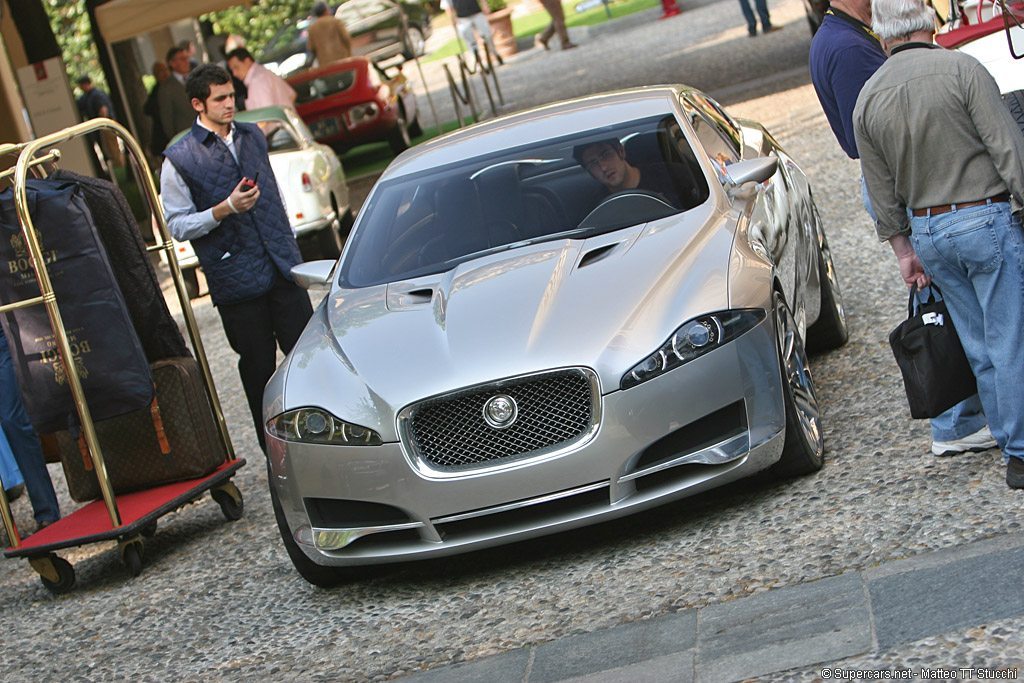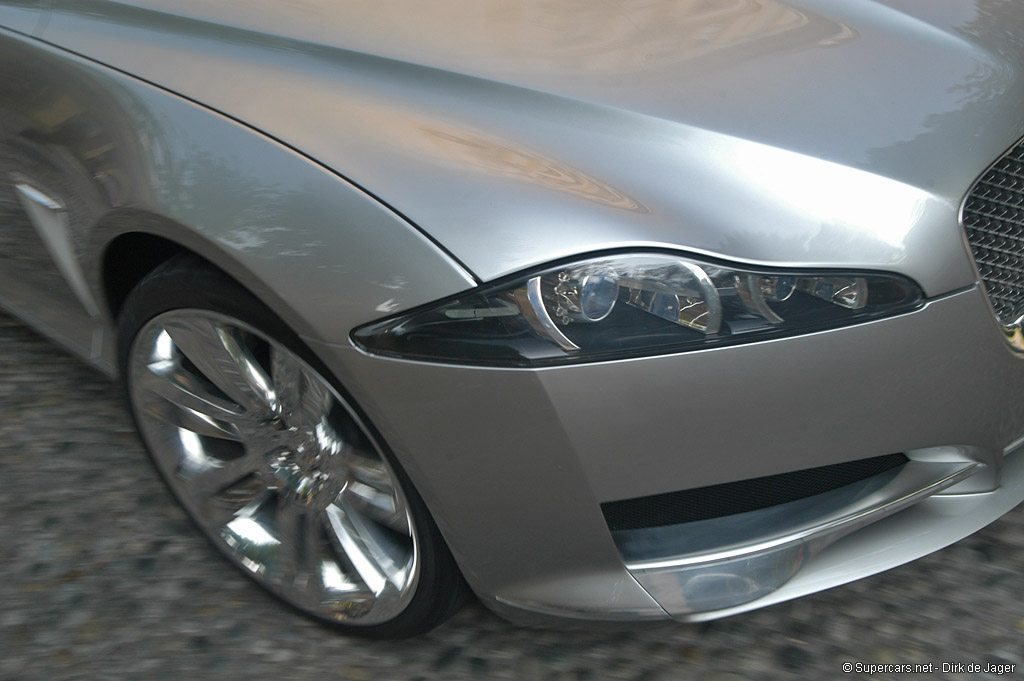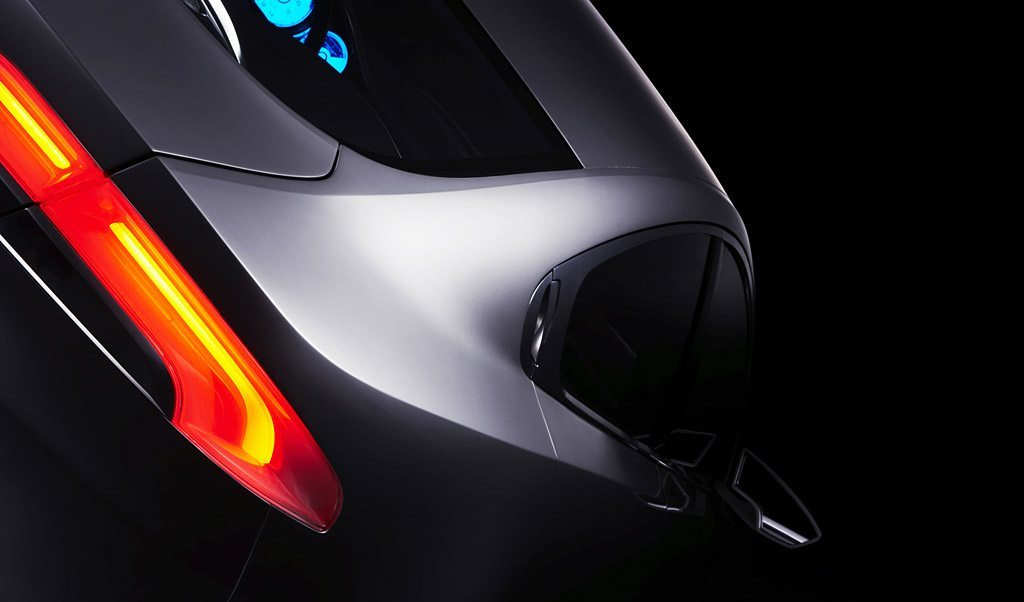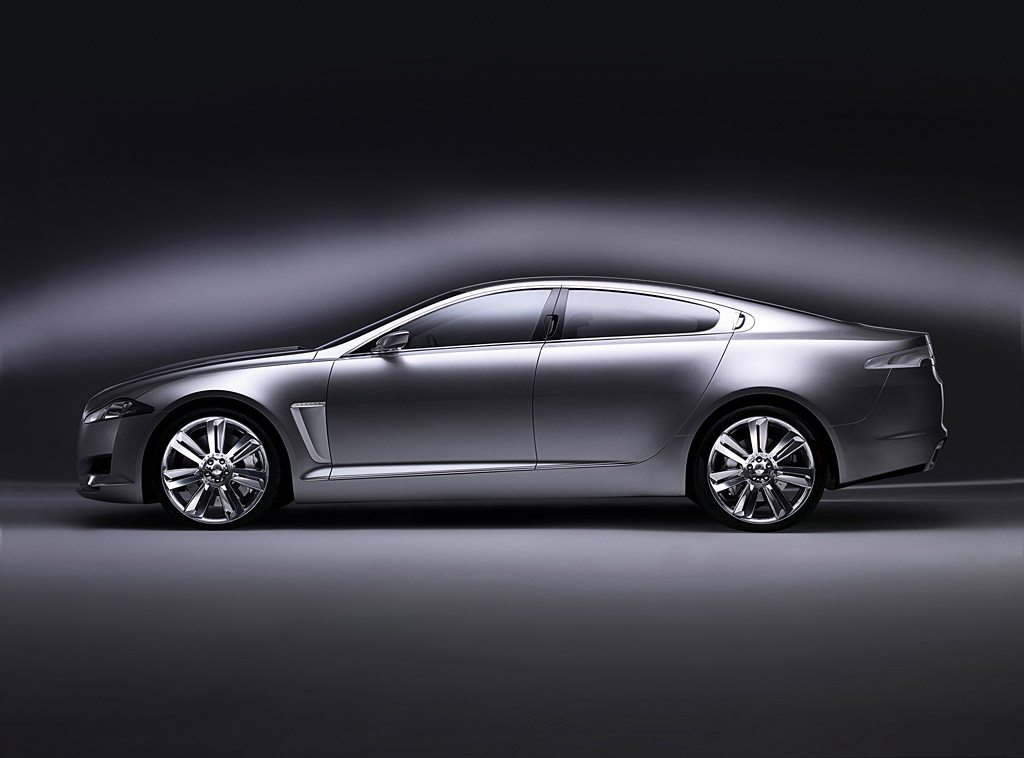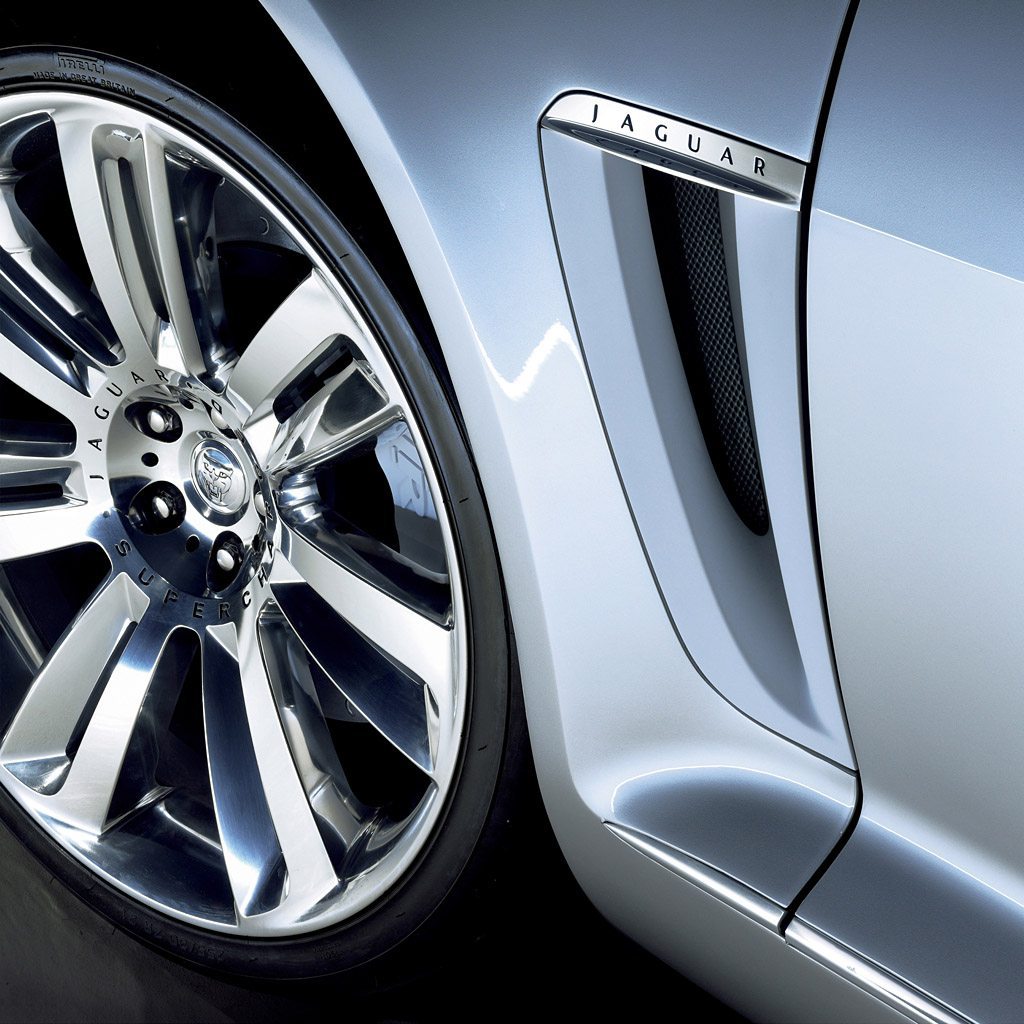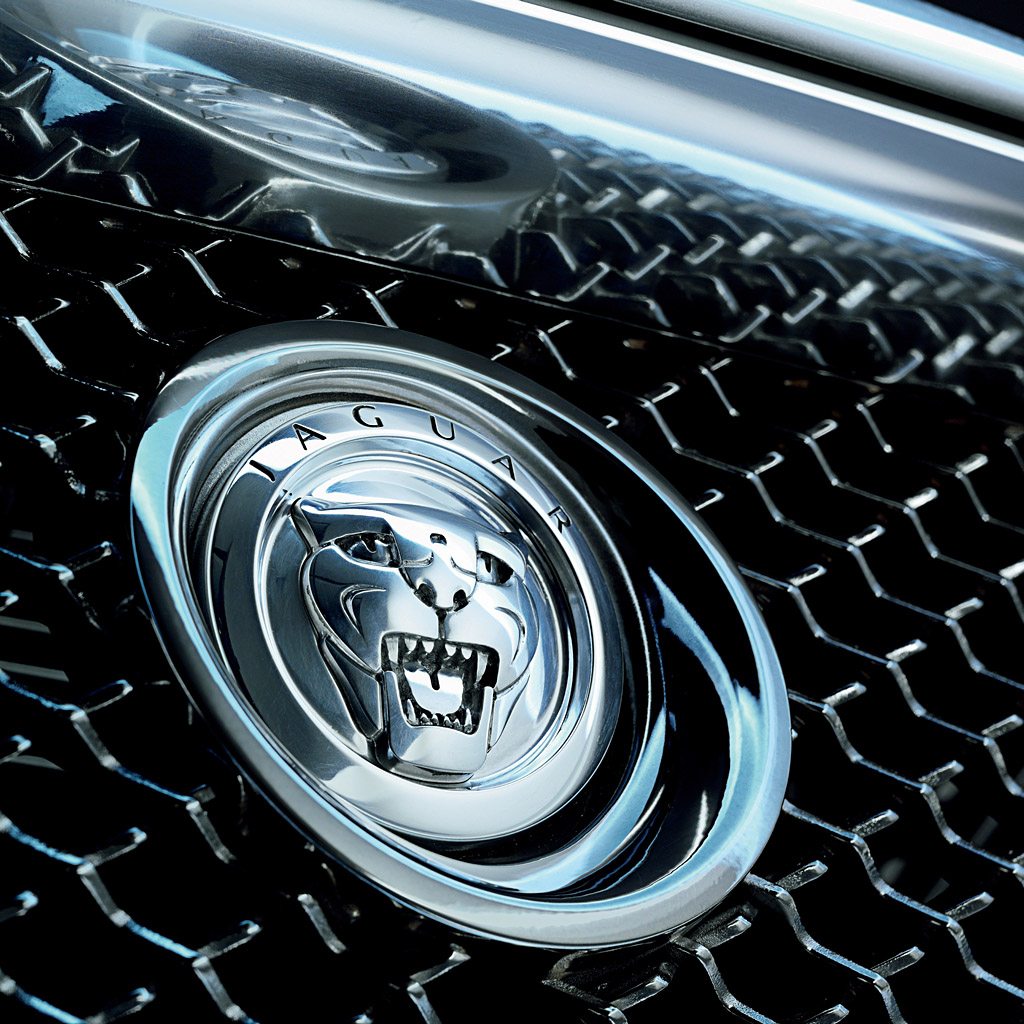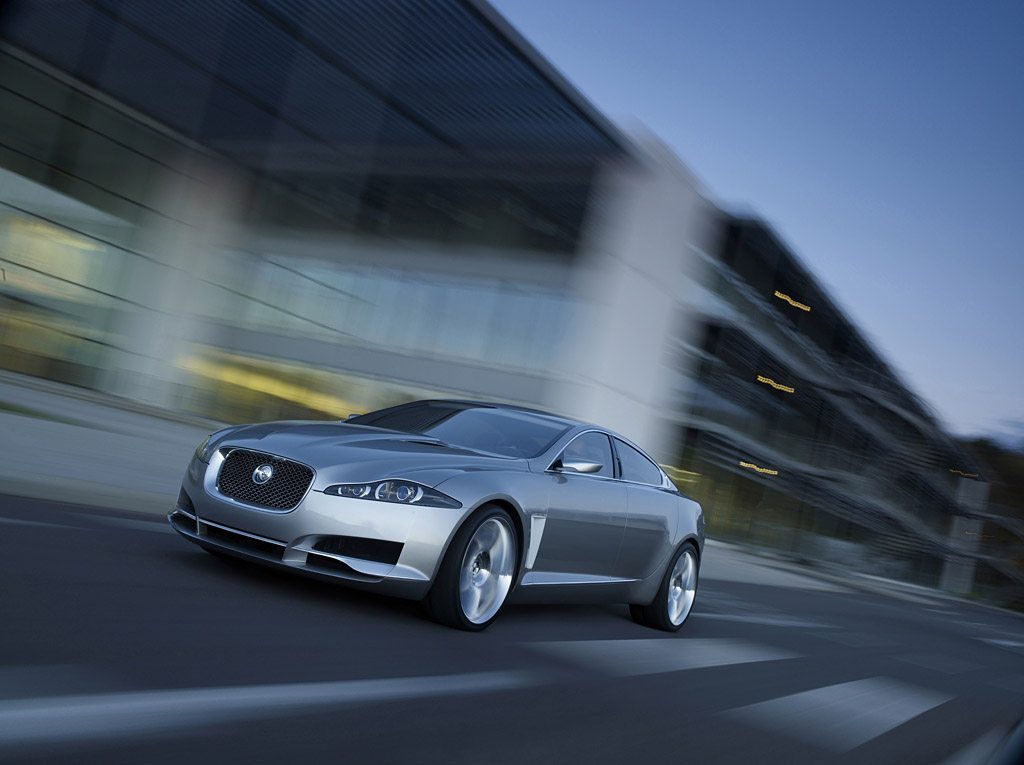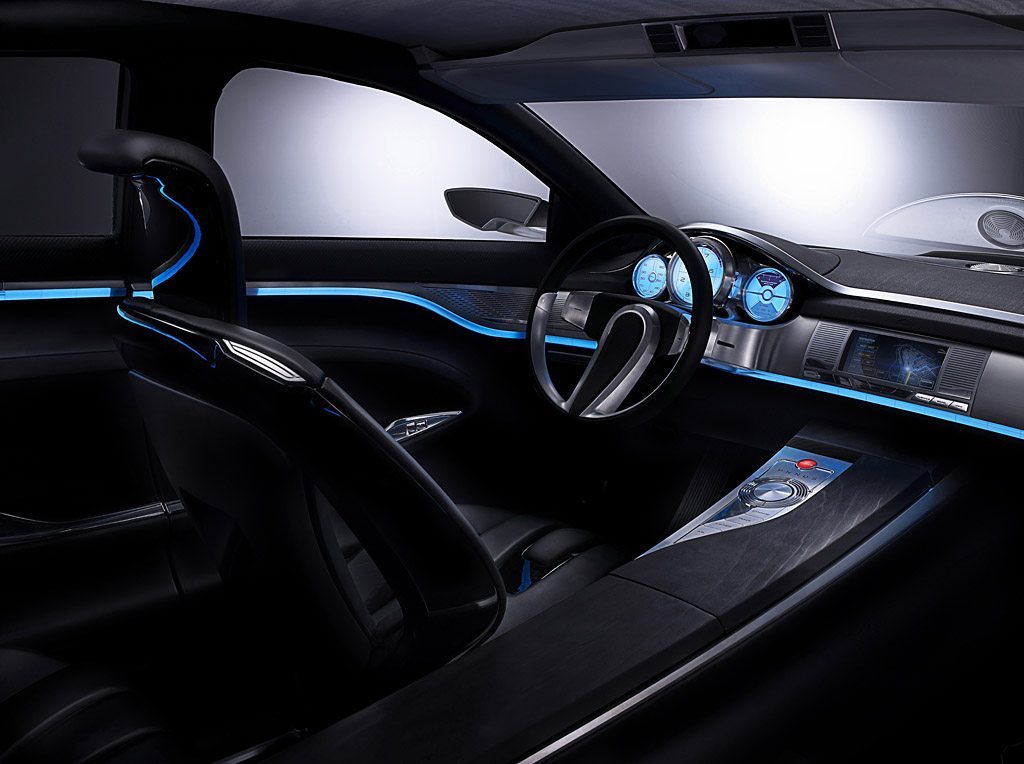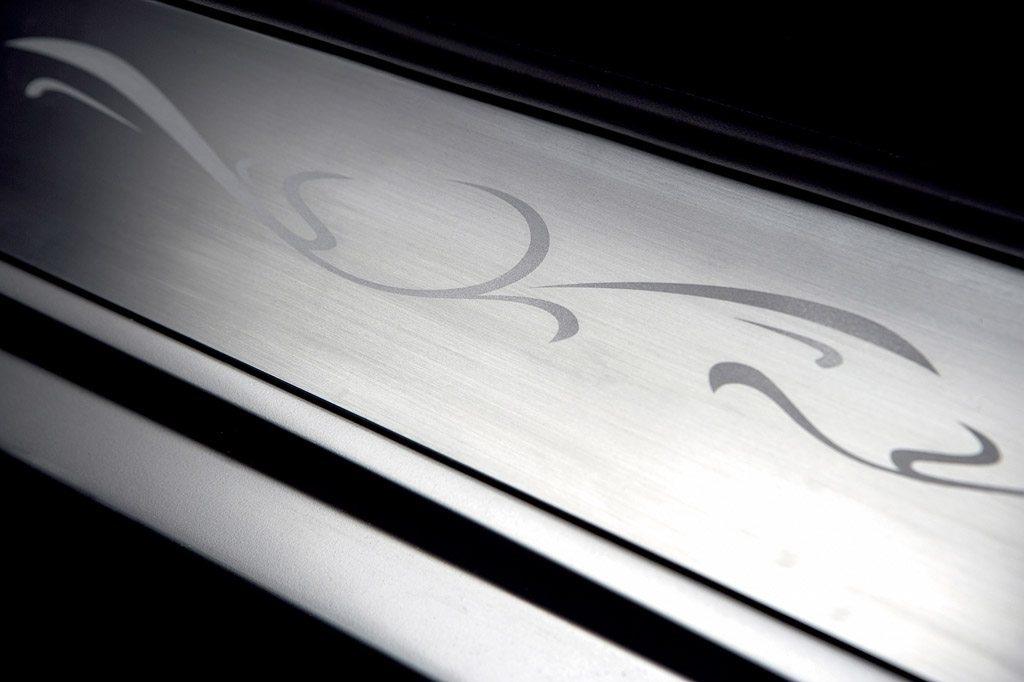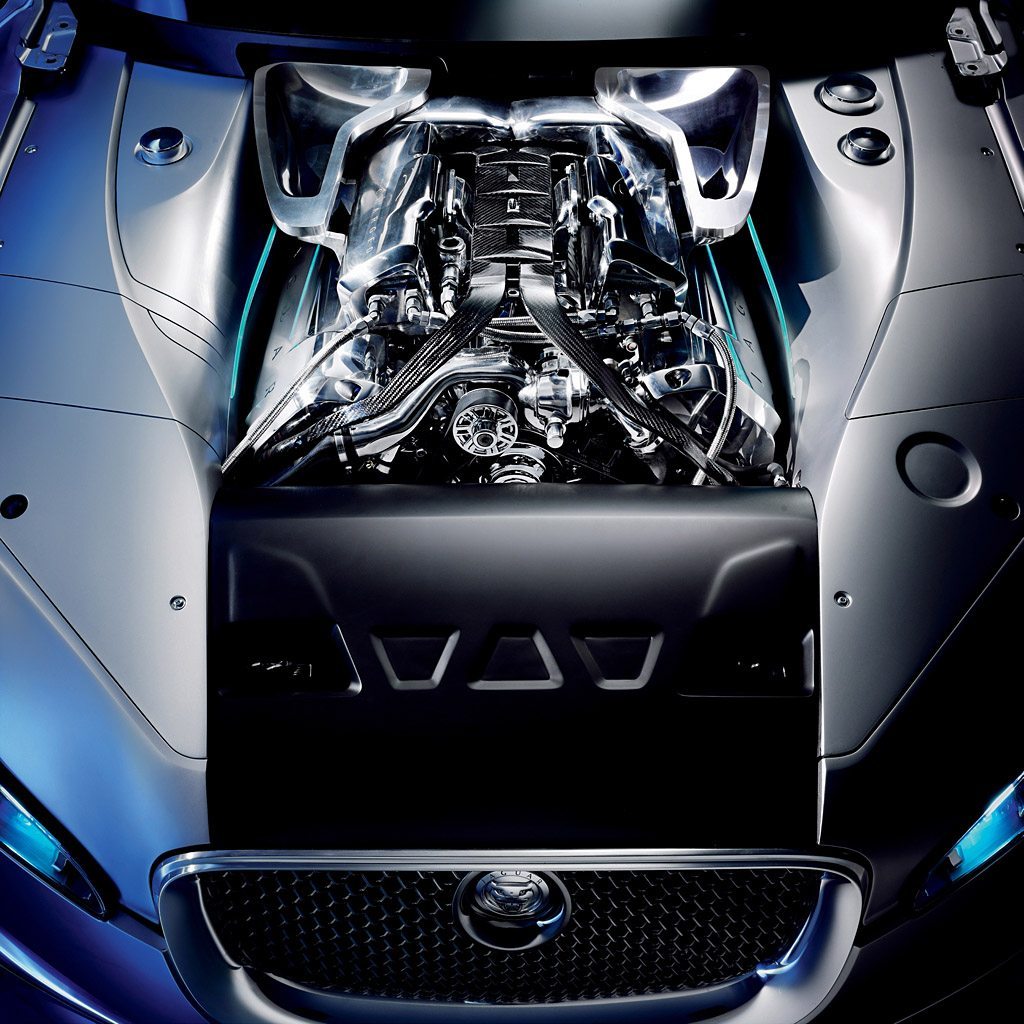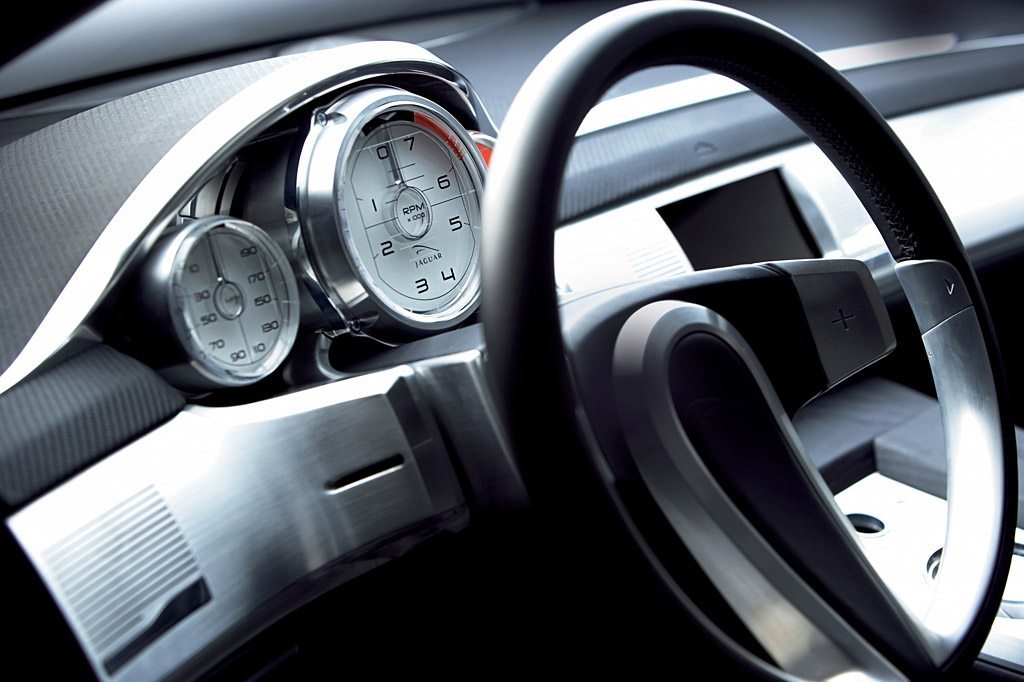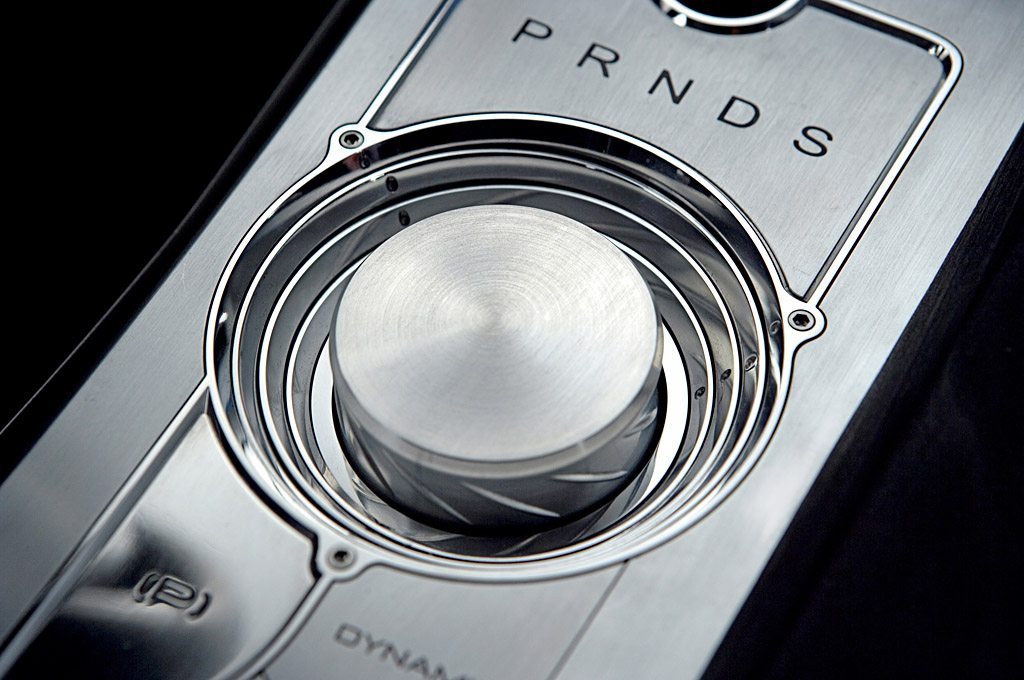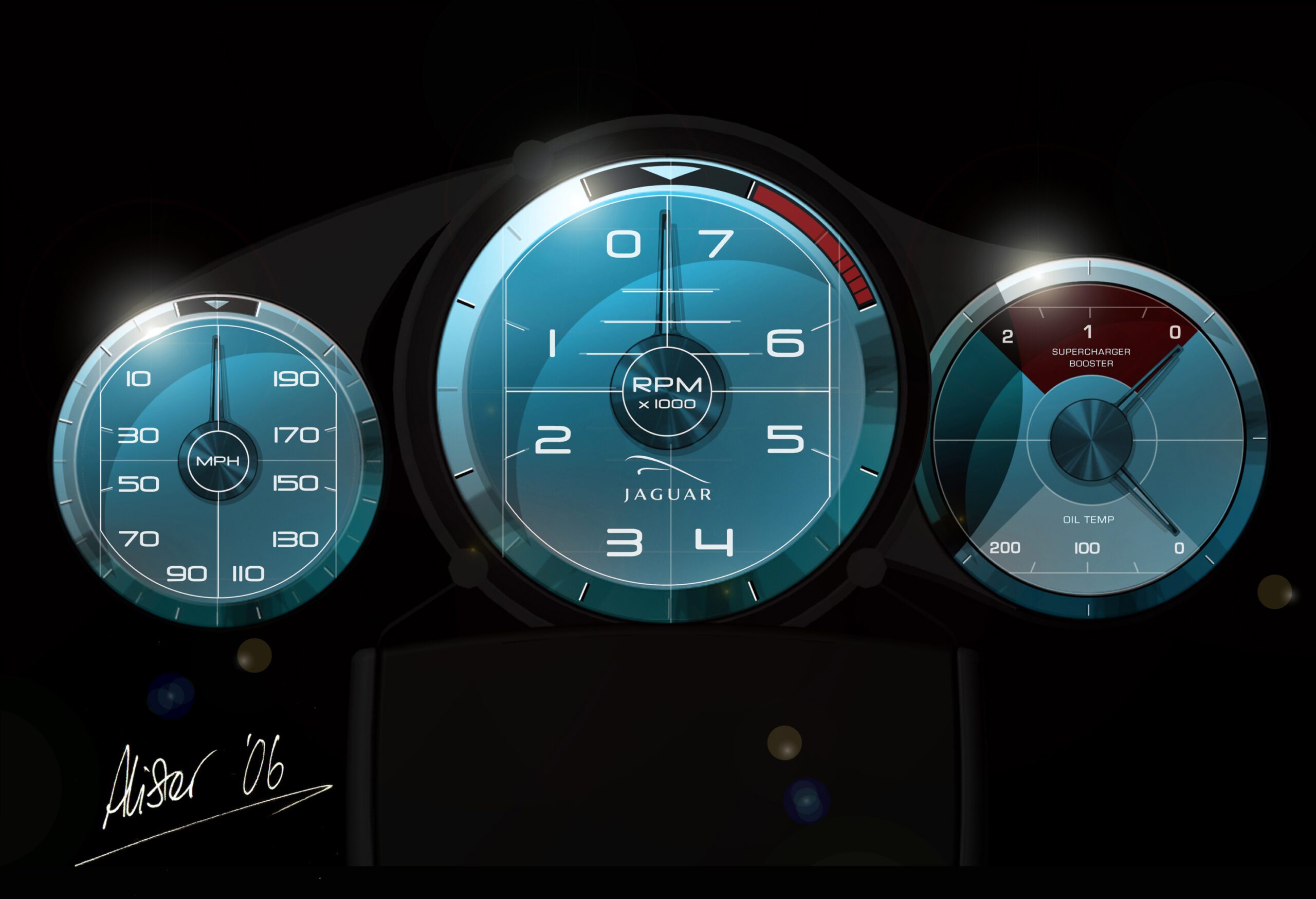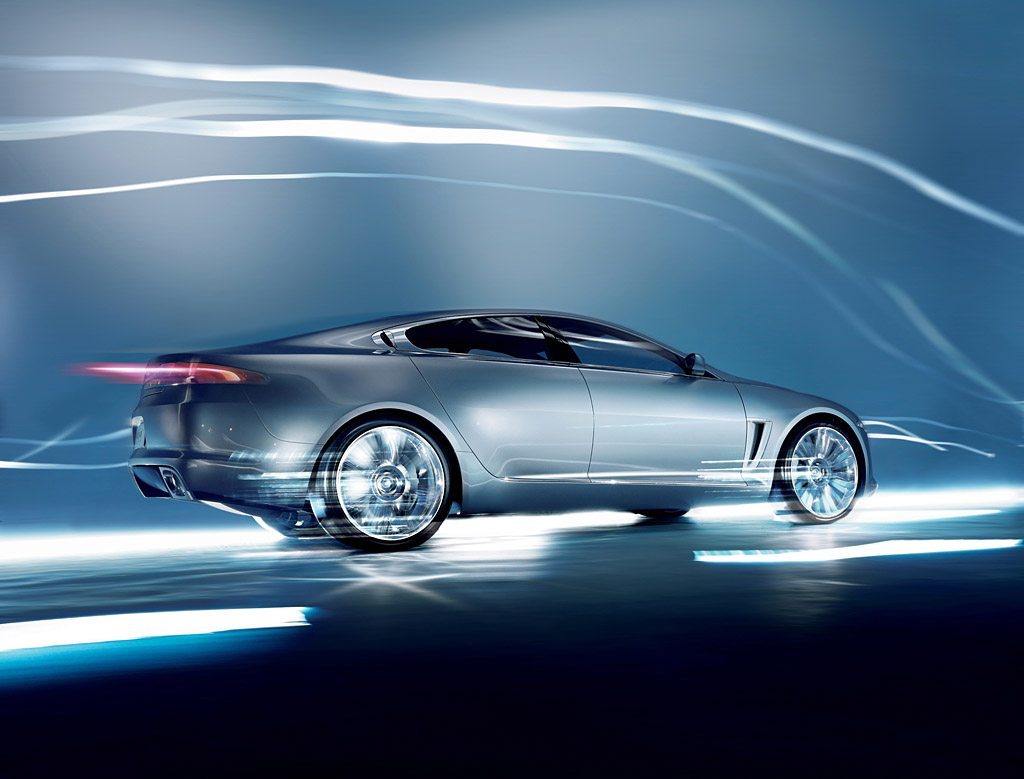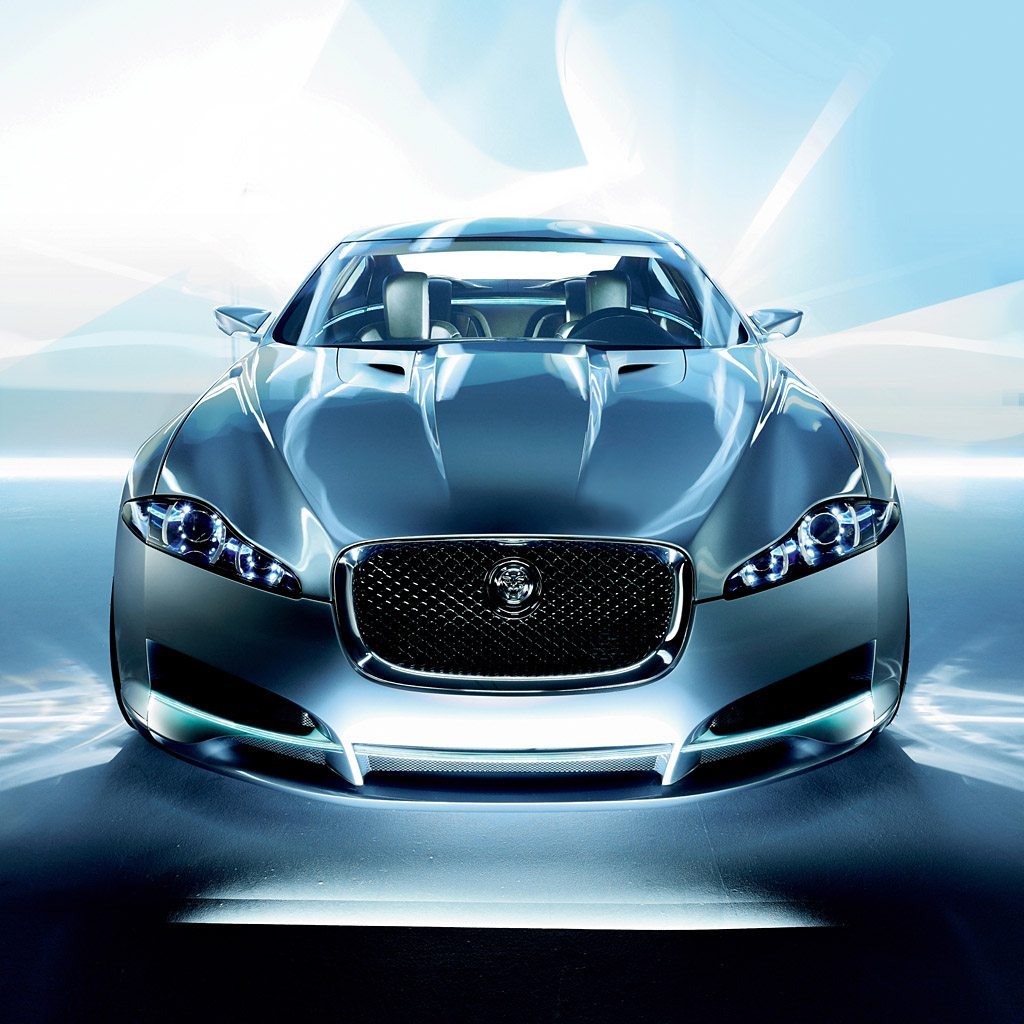2007 Jaguar CX-F Concept
January 7th, 2007-The C-XF concept car signals the onset of a new era for Jaguar. A stunning, four-door sports saloon which blends design purity with unmistakable dynamism, the C-XF, released at the 2007 North American International Auto Show, is a clear indication of the design direction that the next generations of Jaguar saloons will take.
Designed by the same teams that produced the award-winning Jaguar XK sports GT range in 2005, headed by Jaguar Director of Design Ian Callum and Head of Advanced Design Julian Thomson, the C-XF concept is a precursor to cars that will become recognised for their ground-breaking exterior looks and innovative interiors.
The C-XF’s design team took inspiration from some of Founder Sir William Lyons’ greatest cars, including the 1950 Mark VII and 1959 Mark 2 saloons. Their beautiful flowing lines were influenced by some of the great sporting Jaguars of the era including the XK120 and both display that extraordinary feeling of latent power that so signifies a Jaguar.
Ensuring that C-XF, while still a saloon, possessed the sporting profile expected of every Jaguar required maximum design efficiency, the whole exterior skin had to be as tight as possible to the body architecture. This focussed the Jaguar design team on creating a car that Ian Callum describes as ”the absolute definition of athleticism”, a performance-oriented sports saloon that is still inherently practical and capable of carrying four people in total comfort.
Set into the front of the C-XF is a bold and aggressive grille finished in black chrome. Recessed deeply into the body rather than sitting flush with the surface, the visual effect is similar to that of an air intake on a jet engine and serves as a reminder that directly behind is a sophisticated and powerful 4.2-litre supercharged V8 engine.
Running backwards from the nose of the C-XF is the main feature line of the car, an unbroken shoulder that flows beneath the cabin glassline and into the haunch over the rear wheel. It is this feature, a modern interpretation of renowned Jaguar sports saloons from history, that endows C-XF with its latent power. A similarly simple line can also be seen on the new XK range and is one of the design cues that will carry forward onto the next generation of Jaguars.
Above the shoulder line sits a low and sporting cabin with aluminium brightwork highlighting the coupe feel of the car. Further sporting lines are accentuated by the muscular bonnet and the side power vents that have a functional white ceramic finish.
At the rear of the C-XF a very sculptured shoulder flows from the C-pillar into a tight, aggressively tapered tail that clearly displays traditional Jaguar design cues yet succeeds in striking an incredibly modern feel. When seen from behind, C-XF is noticeably wide and powerful, a look accentuated by the large rear diffuser. The basic principle of diffuser technology sees air being drawn from beneath the car to create a low pressure area that improves cornering grip at higher speeds.
The emphasis is on tailored performance rather than pampered luxury and nowhere is that better demonstrated than in the lightweight, sculpted bucket-style front seats. Trimmed in semi-aniline leather (a specially dyed hide which ensures even colouration yet retains its softness) the seats are sports-styled yet also offer impressive comfort thanks to a deeply padded lumbar area with ventilation cavities. Twin individual bucket seats house the rear-seat passengers.
Between the seats runs a tall central transmission tunnel that gives the occupants a sense of sitting deep within a futuristic cockpit. One of the keys to any Jaguar interior is that occupants should feel as if they are enclosed in the car, not sitting on it. The C-XF’s interior cossets in just such a way, creating an inviting cabin for passengers to slip into, rather than surrounding them with bland, open space.
The focal point of the interior is a sweeping brushed aluminium facia that wraps around the cabin in a dynamic linear graphic that instils a sense of velocity. The counterpoint to the aluminium is a combination of leather and wood that takes detail of finish to a new level.
What at first sight may seem to be a simple black interior is actually a sophisticated and contemporary blend of materials including a unique carbonfibre-pattern leather and luxurious semi-aniline leather. Areas of the doors and transmission tunnel have been carved from Poplar wood and then scorched to obtain a rich satin feel. This finish was perfected by artist Clive Sheridan, who produced these beautiful burnt wood forms.
Jaguar’s ethos on embracing new technologies that enhance the driver experience has long been that they should surprise, delight and inform, rather than impose themselves or bombard the user with excessive information or choice. Visually coming to life when being started is one thing, but sensing the requirements of an occupant without physical touch is a further, significant leap forward again. The introduction of a new prototype technology, called JaguarSense, sees four sensors hidden within the doors react to the sweep of your hand as it passes over them. Once activated, the inner door handles, previously hidden, motor outwards ready to be used.
A fifth sensor, located in the facia, responds to the proximity of your hand to reveal an infotainment screen that lies flush within the aluminium front panel. The sequence continues with the centre section of the dashboard rotating 90 degrees to display an advanced Dual View screen which is capable of projecting two different images to the driver and passenger simultaneously. For example, the driver can view satellite-navigation instructions while the passenger watches a DVD-based movie.
The Dual View system works by utilising a parallax barrier to divide light into individual viewing cones for the passenger and driver, allowing each front-seat occupant to view their own personalised display. The Dual View system, which has been developed for Jaguar by mobile media specialists Alpine, uses a 262,144 colour amorphous silicon TFT screen.
Also contained within the rotating panel are air vents that, like the screen, are hidden from view until the driver requires them. This is in complete harmony with the overall sophistication of the driver environment. Behind the single-spoke steering wheel with âfloatingâ gear-selector paddles sits a dial cluster that has been inspired by the cockpit of an airplane. The main central dial â the rev counter â has graphics reminiscent of an artificial horizon instrument from an aircraft. The dials also respond to the way C-XF is being driven. If the driver puts the transmission into sporting Dynamic mode, the rev counter motors outwards (in the way a long lens on an SLR camera operates), ensuring its increased prominence.
Beneath the C-XF’s bonnet, further technical excellence is immediately apparent. The car is powered by an enhanced version of Jaguar’s renowned 4.2-litre supercharged V8 engine. Tuned to produce in excess of 420bhp and 500Nm of torque this proven powerplant and its six-speed automatic transmission with Jaguar Sequential Shift manual gearchange capability, deliver superb sporting performance. If C-XF were a production car, it would reach an electronically limited top speed of 155mph, with the possibility of an unrestricted speed in excess of 180mph.
And the technology advances continue here, too, with the electrical architecture for the 4.2-litre engine encased in a unique carbon-fibre wiring loom. Designed and constructed by Beru F1 Systems, the electrical spider harness is not only beautiful but also extremely functional.
The C-XF is the first car ever to use Beru F1 System’s unique Wire in Composite (WIC) technology. WIC completely encloses all wiring in a bespoke carbon-fibre sleeve, protecting it from damage and also improving durability, packaging, weight and aesthetics. As the first vehicle to use the technology, the C-XF leaps ahead of upcoming debuts in both Formula 1 motor racing and the aerospace industry â and allows Jaguar to further investigate production car potential for the system.
Read more at http://www.supercars.net/cars/3696.html#IW2cktKVXP5aqWWI.99





